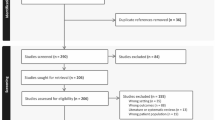Abstract
This study characterizes available surveillance data for HIV infected foreign-born residents in the District of Columbia (DC) to inform local HIV prevention and care efforts. HIV surveillance data were reviewed for adults and adolescents (ages ≥13 years) living with HIV in 2008. Variables analyzed included demographics, region of origin (for persons born outside of the U.S.), insurance coverage, linkage to and continuous HIV care. Of the 16,513 DC residents living with HIV diagnoses, 1,391 (8.4 %) were foreign-born. Of foreign-born infected, 71.9 % were male; 33.3 % were from Africa and 20.8 % from Central America; 80.6 % were exposed through sex; 36.3 % had health coverage at diagnosis. While 100 % of foreign-born persons had documented linkage to HIV care, only 18.0 % had documentation of continued HIV care. These data suggest that strengthening continuous HIV care support after successful care linkage is warranted for foreign-born persons living with HIV in DC.
Similar content being viewed by others
References
Hall HI, Espinoza L, Benbow N, Hu YW, for the Urban Areas HIV Surveillance Workgroup. Epidemiology of HIV infection in large urban areas in the United States. PLoS ONE. 2010;5(9):e12756. doi:10.1371/journal.pone.0012756.
Magnus M, Kuo I, Shelley K, et al. Risk factors driving the emergence of a generalized heterosexual HIV epidemic in Washington, district of Columbia networks at risk. AIDS. 2009;23(10):1277–84.
Centers for disease control and prevention (CDC). HIV survellance report 2010, Vol 22. 2012 http://www.cdc.gov/hiv/surveillance/resources/reports/2009report/pdf/table3a.pdf. Accessed Aug 6 2012.
Network GaSGaR. Washington, DC: Beta + Global City. 2008. Accessed July 17, 2012.
U.S Bearuea of the Census. 2008. American Community Survey 1-year Estimates: Washington, DC. 2010. Accessed Jun 11, 2012.
Prosser AT, Tang T, Hall HI. HIV in persons born outside the United States, 2007–2010. JAMA. 2012. doi:10.1001/jama.2012.9046.
Johnson AS, Hu XH, Dean HD. Epidemiologic differences between native-born and foreign-born black people diagnosed with HIV infection in 33 US states, 2001–2007. Public Health Rep. 2010;125:61–9.
Kerani RP, Kent JB, Sides T, et al. HIV among African-born persons in the United States: a Hidden epidemic? J Int Assoc Provid AIDS Care. 2008;49:102–6.
Page LC, Goldbaum G, Kent JB, Buskin SE. Access to regular HIV care and disease progression among black african immigrants. J Natl Med Assoc. 2009;101:1230–6.
Levy V, Prentiss D, Balmas G, et al. Factors in the delayed HIV presentation of immigrants in Northern California: implications for voluntary counseling and testing programs. J Immigr Minor Health. 2007;9(1):49–54.
Harawa NT, Bingham TA, Cochran SD, Greenland S, Cunningham WE. HIV prevalence among foreign- and US-born clients of public STD clinics. Am J Public Health. 2002;92(12):1958–63.
Shedlin MG, Decena CU, Oliver-Velez D. Initial acculturation and HIV risk among new Hispanic immigrants. J Natl Med Assoc. 2005;97(7):32S–7S.
National HIV/AIDS strategy for the United States. available at http://www.whitehouse.gov/sites/default/files/uploads/NHAS.pdf. Accessed Aug 6, 2012.
CDC. distinguishing public health research and public health non research. http://www.cdc.gov/od/science/integrity/docs/cdc-policy-distinguishing-public-health-research-nonresearch.pdf. Accessed Apr 22, 2013.
United Nations Annual Demographic Yearbook. available at: http://unstats.un.org/unsd/demographic/products/dyb/dyb2008.htm. Accessed Aug 6, 2012.
The district of Columbia HIV/AIDS Epidemiology Annual Report 2011. http://doh.dc.gov/sites/default/files/dc/sites/doh/publication/attachments/HAHSTA_ANNUAL_REPOR_2011.pdf. Accessed Oct 4, 2012.
UNAIDS. AIDS info Country Fact Sheet, Ethopia. 2009; http://www.unaids.org/en/regionscountries/countries/ethiopia/. Accessed Jun 10, 2012.
UNAIDS. AIDS info Country Fact Sheet, Cameroon. 2009; http://www.unaids.org/en/regionscountries/countries/cameroon/. Accessed Jun 10, 2012.
Mitha K, Yirsalign M, Cherner M, McCutchan A, Langford TD. Risk pereception and beliefs regarding HIV Infection among ethiopian immigrants. AIDS Educat Preven. 2009;21:484–94.
Beyene Y, Potential HIV. Risk behaviors among Ethiopians and Eritreans in the diaspora: a bird’s-eye view. Northeast Afr Stud. 2000;7(2):119–42.
UNAIDS. AIDSinfo Country Fact Sheet, Nigeria, 2009. 2011; http://www.unaids.org/en/Regionscountries/Countries/Nigeria/. Accessed Apr 7, 2013.
UNAIDS. AIDS info Country Fact Sheet, El Salvador. 2009; http://www.unaids.org/en/regionscountries/countries/elsalvador/. Accessed Mar 10, 2013.
UNAIDS. AIDS info Country Fact Sheet, Guatemala. 2009; http://www.unaids.org/en/regionscountries/countries/guetemala/. Accessed Mar 7, 2013.
UNAIDS. AIDSinfo Country Fact Sheet, Mexico. 2009; http://www.unaids.org/en/regionscountries/countries/mexico/. Accessed Mar 7, 2013.
Strathdee S, Magis-Rodriguez C. Mexico’s evolving HIV epidemic. J Am Med Assoc. 2008;300(5):571–3.
Crawford T, Caldwell G, Bush HM, Browning S, Thornton A. Foreign born status and HIV/AIDS: a comparative analysis of HIV/AIDS characteristics among foreign and US born individuals. J Immigr Minor Health. 2012;14(1):82–8.
Marks G, Gardner LI, Craw J, Crepaz N. Entry and retention in medical care among HIV-diagnosed persons: a meta-analysis. AIDS. 2010;24(17):2665–78.
Cohen SM, VanHandel MM, Branson BM, Blair JM, Hall HI, Hu X, Koenig LJ, et al. Vital signs: HIV prevention through care and treatment—United States. MMWR Morb Mortal Wkly Rep. 2011;60(47):1618–23.
Cohen MS, Chen YQ, McCauley M, et al. Prevention of HIV-1 infection with early antiretroviral therapy. N Engl J Med. 2011;365(6):493–505.
District of Columbia Department of Health. Red Carpet Entry: HIV care and treatment is open to everyone. Available at: http://doh.dc.gov/doh/cwp/view,a,1371,q,604999.asp. Accessed Apr 22, 2013.
Erwin J, Morgan M, Britten N, Gray K, Peters B. Pathways to HIV testing and care by black African and white patients in London. Sexually Transm Infect. 2002;78(1):37–9.
Foley EE. HIV/AIDS and African immigrant women in Philadelphia: structural and cultural barriers to care. AIDS Care. 2005;17(8):1030–43.
Deren S, Shedlin M, Decena CU, Mino M. Research challenges to the study of HIV/AIDS among migrant and immigrant Hispanic populations in the United States. J Urban Health-Bulletin NY Acad Med 2005;82(2):III13–25.
London AS, Driscoll AK. Correlates of HIV/AIDS knowledge among U.S.-born and foreign-born Hispanics in the United States. J Immigr Health. 1999;1(4):195–205.
Author information
Authors and Affiliations
Corresponding authors
Additional information
Disclaimer
The findings and conclusions in this report are those of the authors and do not necessarily represent the official position of the Centers for Disease Control and Prevention.
Rights and permissions
About this article
Cite this article
Willis, L.A., Opoku, J., Murray, A. et al. Diagnoses of Human Immunodeficiency Virus (HIV) Infection Among Foreign-Born Persons Living in the District of Columbia. J Immigrant Minority Health 17, 37–46 (2015). https://doi.org/10.1007/s10903-013-9878-5
Published:
Issue Date:
DOI: https://doi.org/10.1007/s10903-013-9878-5




